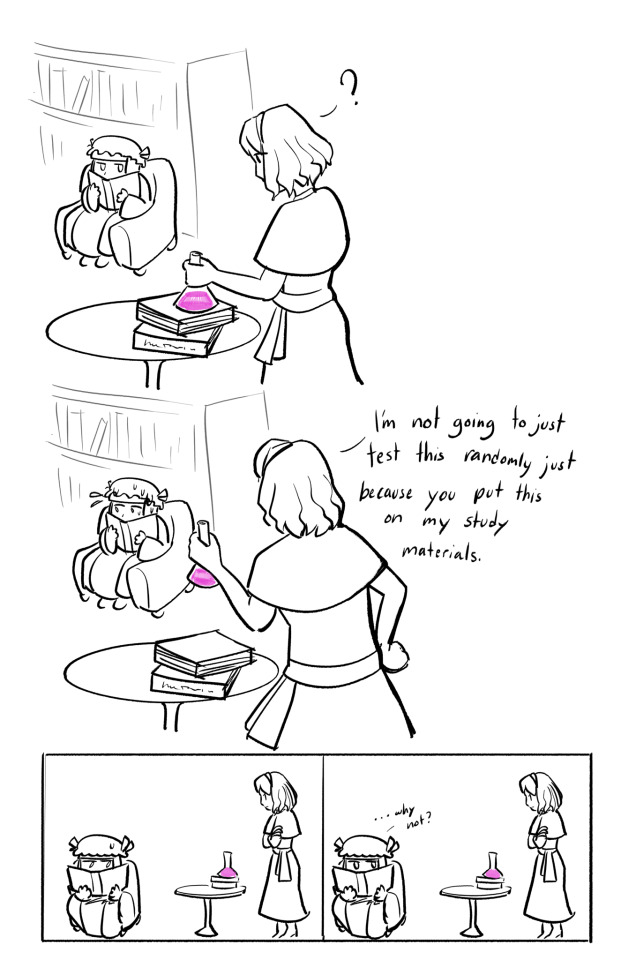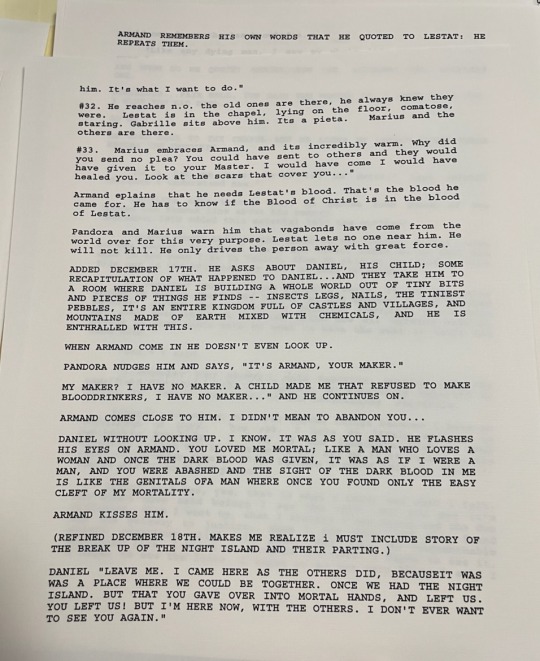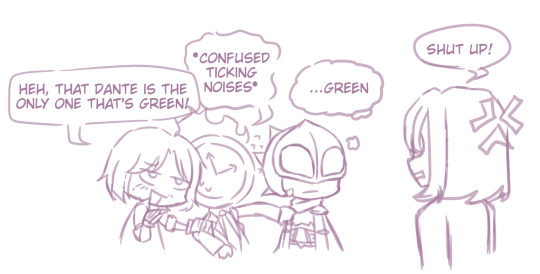#the devil's library
Text
A Brief History of Satanism
I see quite a bit of misinformation circulated about Satanism's historical origins, both online and in the pages of books, so I thought it may be worthwhile to give a breakdown of the truth as my research has shown it to me. I have no official credentials as a historian, but I'm a theistic Satanist who takes my religion and my research very seriously. I encourage all to read my words and respond with corrections if they notice a mistake in my work; that being said, I will likely demand sources if someone's "correction" conflates with what my research has shown me.
First off, I'm going to disappoint many of my fellow theistic Satanists with this announcement: Satanism is not ancient. It's not older than Christianity, it's not even as old as Christianity, by a long shot. I suspect this need to insist that Satan and his followers are an ancient faith (or that they can somehow be found within other faiths, such as comparing Satan to Pan or Shiva) stems from Christianity. Christianity was once a very new religion in comparison to those that surrounded it, and in order to gain followers and create legitimacy for themselves, Christians had to insist that their religion was the only true one, that their god had been pulling the strings from the beginning, and that if you looked back in Jewish holy writings you'd find evidence of Jesus and his teachings. Let us Satanists not make the same mistake.
And secondly, to disappoint the atheists in the crowd: LaVey didn't invent Satanism. Yes he was very impactful on the Satanic scene, especially in the anglosphere, but he didn't invent the entire religion.
Alright, let's start at the beginning.
Satan, and the concept of worshiping him, began in the minds of Christians. That may seem like a let-down to some people, but it's the truth. Satan as a powerful lord of evil and enemy of God didn't exist before Christianity. The concept of the satan, or adversary, existed within Judaism, a famous example being the satan of Job, but this was a job for an angel working under God. For further understanding of the Jewish satan you'd have to look into Jewish writing on the topic, but if you want a basic historical explanation, Elaine Pagels' The Origin of Satan gives good context in simple terms. For now I'd just like to emphasize that Capital-S-Satan does not exist in Judaism. That's where the word came from, but it had a different meaning from what Christianity gave it.
When Christianity came along, of course, they began to use the word Satan to refer to the enemy of God, and thus anything they considered to be ungodly or against their beliefs was instead under the domain of Satan. Jews, Pagans, other Christians with differing beliefs or customs, anyone was fair game to be accused of being a Satanist.
This does not mean any of those people were actually worshiping Satan.
"Satanist" was not a real religious identity that anyone claimed, it was an insult and an accusation hurled by Christians at those they wanted to oppress, silence, and control. The Christian worldview did not allow for cultures and religions other than there own (or even variation within their own). If someone wasn't a follower of God, then they were a follower of the Devil, end of discussion.
It is very dangerous, therefore, to assume that any of these people accused of Satanism in the far past would actually have self-identified as Satanists. In my mind it is comparable to thinking the "witches" of the Salem witch trials would've self-identified as such (they did not, they "admitted" to witchcraft under torture. I hope I don't have to explain why that isn't a reliable thing to cite when trying to parse whether someone was a witch or not). By claiming that any group persecuted by Christians in the far past were secretly Satanic, we are not only stripping those people of their actual identities and cultures, we are agreeing with the Christians who harmed them.
To my knowledge we don't see anyone actually viewing Satan in a positive or sympathetic light until the emergence of Romantic Satanism in the late 1700s through the 1800s, with writings by poets like Percy Shelley and of course John Milton. Romantic Satanism, it should be emphasized, was not a religious movement, but an artistic one. Different writers of the era had varied religious identities, from Christian to the beginnings of Atheism, but while they were writing about Satan with more nuance and personality than he'd ever been given before, they were not worshiping him or intending to write holy texts.
It isn't until the 1900s that we begin to see inklings of truly religious Satanism, and not always by that name exactly. Aleister Crowley, founder of Thelema, had some Satanic flavor to his persona (calling himself the Beast 666), despite saying he did not consider himself a Satanist nor worshiped Satan. Crowley's contemporary, Maria de Naglowska, founded a sex-based magical society and religion called The Brotherhood of Eulis, which centered on Satan as the embodiment of Reason, and the story of Adam and Eve as the original magical act of a woman granting magical knowledge to her lover through sex. The Neo-pagan religion Adonism was founded by Franz Sättler, who equated Adonis with Satan in a positive way. There are more to name but this post is already lengthy.
These movements were scattered, some were not well-documented, and many happened in Europe and the original texts were never translated to English. I believe this is part of the reason why Americans and others in the anglosphere may only know of LaVey as Satanism's modern father, because of course, in the 1960s, we got the Church of Satan, and their accompanying Bible. Again, this is a lengthy subject I'm sure I'll make more posts on later, but LaVeyan Satanism is, to my knowledge, the origin of the atheistic Satanism movement, the worldview that deities aren't real (though magic may be, depending on how closely we're sticking with LaVey's worldview) and Satan is a figurehead used to symbolize self-worship. Though they share very few philosophical values, it is due to this version of atheistic Satanism that The Satanic Temple exists today, practicing their own version of Satanism, also without literal deities. It is also due to the CoS that the Temple of Set came to be, as it was originally formed by LaVeyan Satanists who wanted something more theist.
With the creation of the internet we have seen many Satanist authors and some scattered churches, covens, and groups arise; Marie RavenSoul, Aleister Nacht and Magnum Opus, Rev. Cain, Brother Nero, and others. Some of these groups and authors inspired one another, others seem to have sprung up on their own. Others, I'm sure, have been lost to time, and that saddens me as a scholar of Satan and his followers. But that is part of my mission with this blog, is to track down and keep record of every Satanic resource I can find, no matter how obscure.
Follow The Devil's Library here on Tumblr for more posts like this, as well as book reviews in the future. Ave Satanas to my fellow followers of Satan, and to all others, I bid you good day.
[DISCLAIMER: The Devil's Library is not affiliated with any of the previously mentioned groups or authors. It is an independent project by a single Satanist. Do not mistake my mentioning of an author or group as endorsement for their beliefs and practices.]
#satanism#satan#theistic satanism#atheistic satanism#my posts#the devil's library#history of satan#hail satan#satanic witchcraft#satanic religion
145 notes
·
View notes
Text


this is flirting. btw
#the potion was fed to one of the library devils instead (tragic)#touhou#alice margatroid#patchouli knowledge#alipatchy#pachuali#my art
704 notes
·
View notes
Text
“Abuse can feel like love…Why?”
“Starving people will eat anything.”
Penelope Douglas, Nightfall (Devil's Night, #4)
#book quotes#books#books and literature#books & libraries#bookstagram#poetry#poets on tumblr#mahmoud darwish#love quotes#poetsandwriters#penelope douglas#devils night
2K notes
·
View notes
Text

From the early notes for The Vampire Armand in the Anne Rice collection at Tulane University.
239 notes
·
View notes
Text




🖤🤍
#books#books & libraries#booklr#devils night series#devils night#penelope douglas#michael crist#damon torrance#will grayson iii#kai mori#corrupt#hideaway#nightfall#kill switch
324 notes
·
View notes
Text

Look at that, it's Dante, Dante, Dante, and Dante!
They are the Dantes that I know of at the back of my mind, drawn together~
Bonus

#Devil May Cry#Library of Ruina#Limbus Company#Oreca Battle#Dante DMC#Dante LCB#No tag for LoR Dante huh#crossover fanart#I've been stashing the sketch for months-#I'm so happy to be able to finally finish it;;;#I actually don't know much about DMC Dante-#I'm sorry it's a bit lacking-#Also Dante's swords taking so much space-#bruh-#N41R Drawings#Swordsman Dante
261 notes
·
View notes
Text
Enoch O’Connor moment
Finally got around to drawing a fandom-favorite! Here’s my version of Enoch, with bonus clay guys :)

#miss peregrine book#miss peregrines home for peculiar children#mphfpc#the desolations of devils acre#miss peregrine#hollow city#enoch o'connor#O’Connor#library of souls#a map of days#the conference of the birds#the desolations of devil’s acre#mphfpc art#art
80 notes
·
View notes
Text

Whenever the developer of a gacha game create a waifu
#gacha games#dmc#dmc vergil#vergil#i swear to god if i hear another child support joke one more time#honkai impact 3rd#punishing gray raven#genshin impact#wuthering waves#i dont need to tag the character since u already know who im talking about#when will dante get a treatment like that?#does hofi kiana count as a dante daughter?#devil may cry#gacha#tag your games#the fact that the developer just make more waifu indicate that vergil is a waifu material by some game developer#literally#when will there be a gacha game crossover with dmc#oh right fgo also has a vergil lookalike#but hajime is more like roland from library of ruina#vergil is now a blueprint of all waifus
171 notes
·
View notes
Text
Imagine mphfpc exactly as it is but instead of saying "Rise up dead man, rise up😈" Enoch says "Wakie wakiee🥰🤗"
#mphfpc#enoch o'connor#miss peregrines home for peculiar children#peculiar children#miss peregrine book#miss peregrine#ransom riggs#mphfpc book#incorrect mphfpc quotes#hollow city#library of souls#a map of days#the desolations of devils acre#alma peregrine#jacob portman#emma bloom#millard nullings#horace somnusson#bronwyn bruntley#olive abroholos elephanta#claire densmore#fiona frauenfeld#hugh apiston#noor pradesh#dead riser#enorace#wake the dead
208 notes
·
View notes
Text

thanks hanif. cool and normal as always!
i ALSO wish more people talked about the moments that build up to a potential brawl as intimacy.
#this is a library book. so i need to save insane paragraphs any way i can before i start hunting for a used copy#this is a little devil in america btw. really fucking good#abdurraqib#words#h#i can’t keep all the pictures of books i’ve read in my phone anymore so they have to go somewhere
54 notes
·
View notes
Text

Most sane man /s
#caul bentham#mphfpc#miss peregrines home for peculiar children#art#my art#library of souls#the desolations of devil’s acre
55 notes
·
View notes
Text
The Satanic Bible, by Anton LaVey

Title: The Satanic Bible
Author: Anton Szandor LaVey
Publisher: William Morrow Paperbacks
Publishing Date: December 1, 1969 (First Edition)
ISBN-10: 0380015390
ISBN-13: 978-0380015399
Alright, let's start with the elephant in the room. This little book is often the only thing people read on Satanism, and for good reason - it made quite a splash when it was published.
Considered the foundational text of the Church of Satan and their specific style of atheistic Satanism (often called LaVeyan Satanism), The Satanic Bible is part philosophy, part religious teaching, and part magical instruction. LaVey is well known for his stance that humanity does not need God, and that believing in God (or Satan, for that matter) as real entities serves only to hold back our potential. However, LaVey argues that humanity does need religion, and that religion requires dogma and ceremony. The dogma and ceremony LaVey offers to the reader is based on one's own happiness and self-satisfaction, as opposed to the Christian values of self-sacrifice for the greater good. His Nine Satanic Statements, Eleven Satanic Rules of the Earth, and Nine Satanic Sins are easy to read and understand, and seem to be the inspiration for other Satanist's lists of values, such as The Satanic Temple's Seven Fundamental Tenants.
LaVey embraces sexuality and indulgence, framing sexual energy as the best and most potent source of power for magical workings. Magic is described not as an appeal to a higher power but a seizing of one's own fate, aiming for success and happiness through the manipulation of the world around oneself. The practices he recommends are rooted in ceremonial magic, especially Enochian magic.
The Satanic Bible has had multiple editions and translations since its original publication and is widely available through most online book retailers, as well as sometimes being stocked in magical and metaphysical shops.
[DISCLAIMER: The Devil's Library is not affiliated with any of the previously mentioned groups or authors. It is an independent project by a single Satanist. Do not mistake my mentioning of an author or group as endorsement for their beliefs and practices.]
Beneath the cut you'll find my personal review and opinions on this book.
I've said before on this blog that I am not LaVeyan, and that's still true. While I greatly respect the concept of a non-theistic religion and I lift my glass to all those who work hard to form such religions, I prefer a theistic view of the world. On top of that, LaVey's philosophy does little for me. In truth I consider LaVey's work to not be particularly revolutionary in terms of philosophy. He was a self-admitted fan of Ayn Rand and his brand of Satanic individualism has oft been compared to Randian philosophy with a coat of occult paint slapped on top - I think that evaluation holds true. His magical system also strikes me as unoriginal, given he simply reworked the Enocheon keys. My overall evaluation of the man was that he was a lazy philosopher and a lazy magician, but a skilled showman, and that's how he pulled in as many followers and critics as he did. People were rejecting God and practicing ceremonial magic long before LaVey came along. He just cultivated a compelling aesthetic around it.
I think it's safe to say the book is a product of its time and creator. LaVey is both progressive and regressive, endorsing kink and queer sexuality while also objectifying women in his magical practice (LaVey is, as far as I can tell, the originator of the Satanic tradition of using a nude woman's body as an altar, and he makes a note that during ritual, men should wear robes, but women should dress scantily in order to titillate the men) and having some deep misunderstandings about asexuality. It's also not to be taken lightly that while as far as I'm aware, LaVey himself didn't profess to be a white supremacist, his fondness for Ayn Rand shows a fondness for fascism, he certainly rubbed elbows with white supremacists, and various individuals and groups that broke off from the original Church of Satan have been noted as having a range of Nazi-adjacent views and values, namely the Temple of Set. His list of "Satanic names" is also a very sloppily cobbled together list of names of any god, deity, or spirit who's ever been even slightly associated with negativity, utterly ripped from their cultural context and reduced to keywords that, I assume, LaVey expects the readers to either claim as names of their own or use in rituals. The list includes outright racist cultural appropriation, such as the inclusion of Kali's name, to ignorant misrepresentations of myth, such as calling Loki the "Teutonic devil." As always, I recommend referencing scholarly and culturally conscious resources when it comes to discussions of other religions and mythologies. Do not take a single writer with no credentials at face value.
That being said this is a book I generally recommend people read, with the added note that taking it entirely at face value and assuming it's the one true Satanic text is a mistake. The Satanic Bible is integral to our religious history at this point, but we need not cling to it as entirely or even mostly correct. It is also useful to be familiar with it when interacting with other Satanists, as it's possibly the most commonly read book in the entire religion, so like it or hate it, you probably should have some opinion on it.
#satanism#atheistic satanism#the satanic bible#anton lavey#laveyan satanism#satanic magic#the devil's library#the devils library#tdl#bookshelf#my posts
41 notes
·
View notes
Text
I understand it's the devil talking at the tail end of an all-nighter, but I've done so much and I'm so close to the end, maybe I could go to sleep now and finish the rest of it when I wake up. Again, this is the devil speaking, but yknow that guy might have some interesting ideas, let's let em cook
#i'm going to finish ONE more thing and then triple check that I only have one remaining section to finish and then i may consider this plan#frankly i just don't want to stay up until 9 am so i can go print stuff out at the library#i can print it out for free at work#BUT IS THAT THE DEVIL TALKING
114 notes
·
View notes
Text

#About You: Video Games#crosscode#nier replicant#resident evil#slay the princess#disco elysium#i have no mouth and i must scream#shenmue#the binding of isaac#melty blood#in stars and time#dmc vergil#devil may cry#iwatex#project moon#library of ruina#deadly premonition#ffxiv
59 notes
·
View notes
Text
“Because pain in the body quiets the pain in the head. It feels good, like a kill switch for your brain.”
Penelope Douglas, Kill Switch (Devil's Night, #3)
#book quotes#books#books and literature#books & libraries#bookstagram#poetry#poets on tumblr#mahmoud darwish#love quotes#poetsandwriters#penelope x luke#devils night#kill switch#damon torrance
186 notes
·
View notes
Text

From our stacks: "Mask of Mongolian Devil Dancer. Mejrabpom-Russ. This terrifying personage is a Buddhist priest attached to the great monastery of Usersky-Dazan, near Urga, in Mongolia. The mask he is wearing is the devil mask in which he takes part in the dances of the Tsam, performed at the Buddhist autumn festival." From Manners and Customs of Mankind. An Entirely New Pictorial Work of Great Educational Value Describing the Most Fascinating Side of Human Life. Edited by J. A. Hammerton. Over Fifteen Hundred Photographic Illustrations from All over the World - and twenty-Seven Plates in Color. Volume One. London: The Amalgamated Press, Ltd., n.d. (c193-?)
#mongolian devil dancer#masks#devil mask#mask#devil dancer#buddhist priest#mongolia#books#book#old books#library books#library book#detroit public library
82 notes
·
View notes